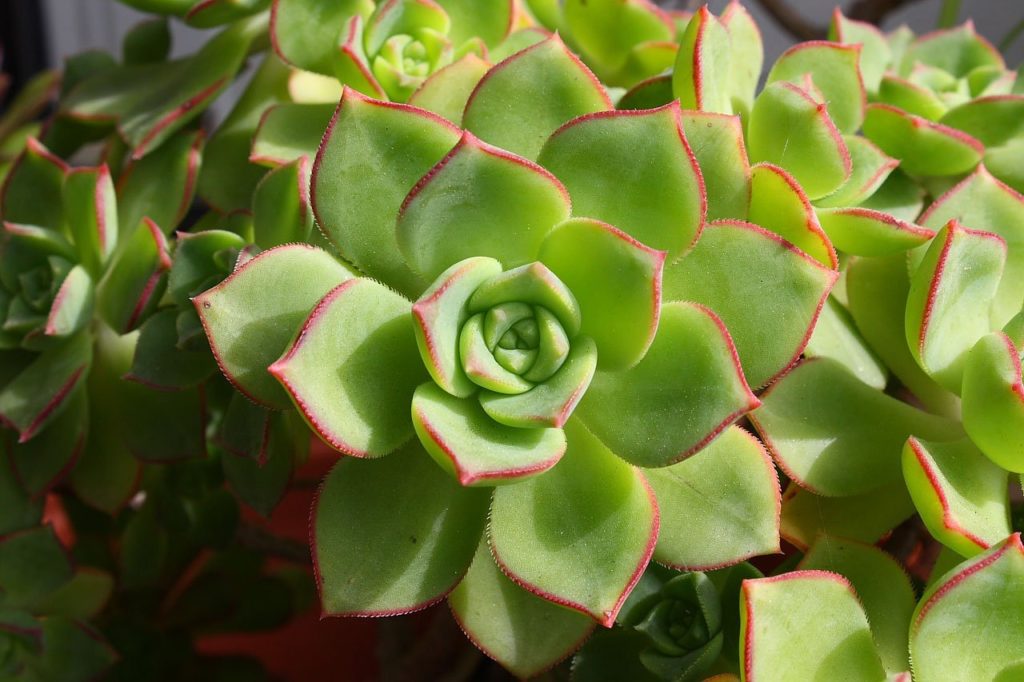
Is it any surprise that a houseplant this beautiful is named after an artist?
In 1787, Atanasio Echeverría y Godoy was part of the Royal Botanical Expedition to New Spain, an exploration of areas throughout what is now California, Mexico, Cuba and Puerto Rico. He created hundreds of drawings of the plants they discovered and cataloged, including this group of succulents.
There are about 150 species of Echeveria, most of which feature the beautiful rosette design. They are sturdy plants that can be grown in the shade, but can also take some frost. All the species are drought-resistant, but they tend to grow better with regular watering and fertilizing.
Most species lose their lower leaves in winter. Since these droppings can be fertile ground for a fungus that can then attack the plant, you should remove them regularly.
Caring for Your Echiveria
- Light: Echeverias prefer full sun to partial shade. However, avoid direct afternoon sun, particularly in the summer, as your plant can actually get sunburnt. In the winter, get them to the brightest window in your home, so they can get their fill of sunlight.
- Watering: Moderate amounts of water are needed from spring through fall. (Wrinkled leaves? That’s your plant telling you it needs more water.) The plants biggest issues tend to come from overwater, so be careful not to soak your plant too much.
- Feeding: Not required but, as we mentioned above, they will grow better with some extra nutrients. It’s easy to overfertilize an Echeverias, so dilute your fertilize more than usual and use less often than recommended for other plants.